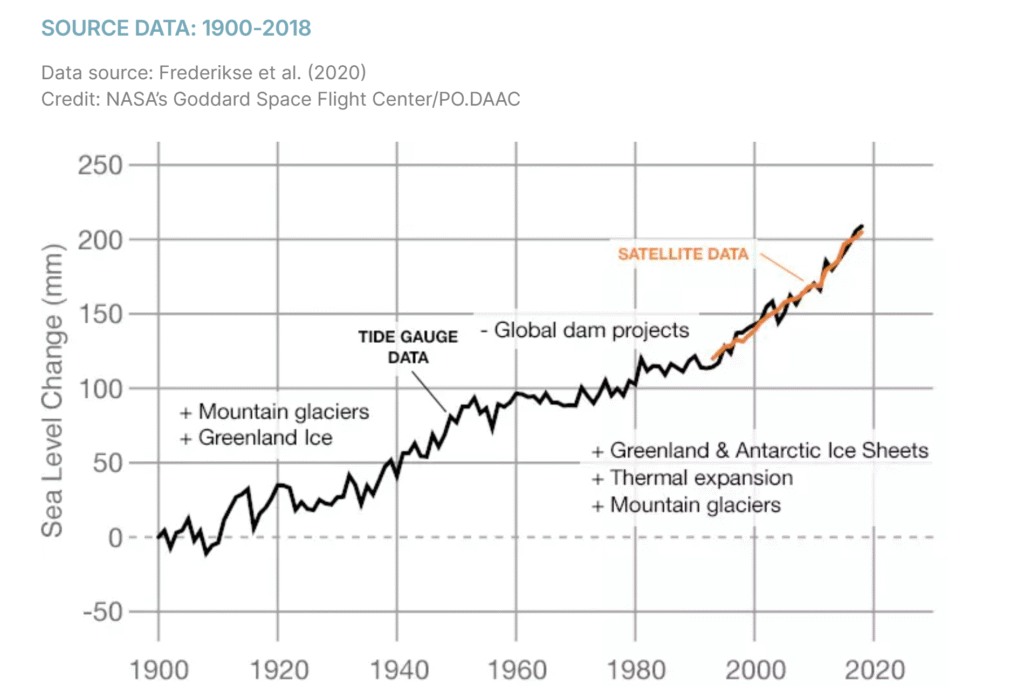Just a decade ago, floods like those currently devastating parts of New South Wales were classified as “1-in-100-year” events. Today, that phrase rings hollow. These so-called rare disasters are returning every 3 to 5 years. Rising sea levels are also redrawing Australia’s coastal risk maps—putting entire neighborhoods at long-term risk of inundation. Flooding is no longer just a matter of rivers and rain, but tides and time. The lesson is clear: our climate has profoundly changed, and our infrastructure, planning, and mindset must catch up—or be repeatedly swept away.
The 2025 Floods: A Turning Point?
In May 2025, torrential rains led to widespread flooding across NSW, with over 50,000 people stranded and 10,000 homes damaged or destroyed. The mid-north coast and Hunter regions were hit particularly hard. Warragamba Dam reached capacity and spilled, flooding parts of Sydney and putting further strain on emergency services. Over 768 flood rescues were carried out, and tragically, at least five lives were lost. (The Guardian)
Events like these are no longer shocking—they are the new normal.
The Myth of the 1-in-100-Year Event
It’s time to retire this misleading terminology. A “1-in-100-year flood” doesn’t mean it only happens once every century—it simply means there’s a 1% chance of it occurring in any given year. But as global warming accelerates and intensifies weather patterns, these odds are being upended. (ABC News)
A report from the Intergovernmental Panel on Climate Change (IPCC) underscores this reality: the frequency and intensity of extreme rainfall events are increasing in virtually every Australian state. With warmer oceans feeding more atmospheric moisture into storm systems, yesterday’s outliers are becoming today’s baselines. (IPCC Report – Australasia Chapter)
Floating Futures and Raised Foundations
Rising sea levels are compounding the risks posed by inland flooding, particularly in low-lying coastal areas. Australia’s extensive coastline places millions of people and billions in infrastructure at risk from the encroaching tide. This makes sea-level rise not just a future threat, but a current pressure that demands proactive architectural and urban planning responses.
We can no longer afford to build for the past. Planning and architecture must embrace resilience as a baseline principle.
NSW has started moving in this direction with initiatives like the Resilient Homes Program, which offers homeowners up to $50,000 to retrofit their houses using flood-resilient design measures. This includes raising floor levels, using water-resistant materials, and even structural redesigns to allow homes to better withstand future inundations. (NSW Government)
Design firms and academic researchers are going further. From elevated houses to amphibious foundations and buoyant dwellings, innovative solutions are being prototyped and implemented in flood-prone areas. These designs are not just about survival—they represent a new ethos of living in harmony with a changing environment.
- The World Economic Forum has highlighted floating homes as a viable, even elegant solution for rising sea levels.
- Engineers Australia has featured case studies in floating, flood-resilient housing designed for both urban and rural settings.
- Modscape’s Floating House concept utilizes buoyancy rafts and piers to enable homes to rise with floodwaters and return safely to their foundations as waters recede.
- The Flood Resilient Design Guide provides practical guidance for climate-adapted housing.
- The Climate Council outlines how climate change exacerbates Australia’s flood risk.
- AdaptNSW offers policy frameworks and adaptation tools for councils.
- Insurance News reports that insurers are adjusting risk models due to flood frequency increases.
- The NSW SES provides on-the-ground flood intelligence and mitigation planning.
- Goldfish & Bay features practical floating architecture applications.
- Sustainable Home Magazine showcases resilient house designs tailored for Australian climate challenges.
From Innovation to Implementation
The Cost Barrier
The upfront investment for resilient housing solutions can be 20–50% higher than traditional builds. While government grants like the NSW Resilient Homes Program provide support, broader affordability remains a challenge—especially for low-income or regional communities.
Insurance & Policy Gaps
Councils and insurers are still adjusting. Many existing codes do not yet accommodate buoyant or stilt-based designs, and insurance premiums often remain high in flood-prone areas despite risk mitigation efforts.
Community Relocation
In extreme-risk zones, resilience may not mean rebuilding, but retreating. This creates tension between heritage, identity, and safety—particularly for Indigenous and long-established communities.
Trade-Offs and Alternatives
Despite their promise, floating and elevated homes are not a universal solution. Challenges in scaling these designs across Australia’s diverse geography include:
- Environmental Footprint: Building new infrastructure in sensitive floodplains can impact local ecosystems. Even resilient designs must consider the downstream effects on biodiversity and water quality.
- Cultural and Social Costs: Retrofitting or relocating entire communities—particularly in regional or culturally significant areas—can lead to loss of connection to land, disruption of community ties, and resistance from residents.
- Equity Concerns: Wealthier regions may adapt faster, while poorer or marginalized communities remain exposed. Without strong public policy and financial mechanisms, adaptation risks widening social divides.
To be truly effective, resilience must be part of a broader, multi-pronged strategy that includes:
- Early-warning systems and real-time flood data (NSW SES)
- Smarter land-use planning and zoning restrictions
- Community-based relocation frameworks with local consultation
- Insurance reform and incentive structures for climate-adapted builds
Flood-resilient infrastructure is not a silver bullet. It must sit within a mosaic of climate adaptation tools—designed with justice, practicality, and long-term sustainability in mind.
Prioritizing Resilience: A Roadmap Forward
Not every community needs to float—but every community must plan.
- Context-Based Solutions: Coastal towns like Ballina may benefit from elevated or floating infrastructure, while inland communities like Lismore might need managed retreat zones combined with upstream flood mitigation works. A one-size-fits-all model doesn’t apply—planning must be hyper-local, grounded in topography, cultural history, and flood risk modelling.
- Community-Led Relocation: Case studies in Grantham, QLD (post-2011 floods), show that voluntary, community-driven relocation can succeed—with fair compensation, cultural sensitivity, and transparent governance. This model could guide similar future efforts in high-risk zones across NSW and Victoria.
- Integrated Funding Models: Federal and state programs must evolve beyond emergency relief. Long-term adaptation should be financed through climate resilience bonds, insurance levies redirected toward infrastructure upgrades, and public-private partnerships incentivizing flood-resilient development.
Key Takeaways
- “1-in-100-year” floods are now occurring every few years.
- Climate change is reshaping Australia’s flood patterns.
- Resilient housing solutions like raised floors and floating designs are emerging.
- Policy changes, insurance reform, and zoning upgrades are essential.
- Community-led adaptation (e.g., Grantham relocation) provides a model.
- We need integrated funding: resilience bonds, grants, and public-private partnerships.
Call to Action
Australia can’t afford to wait for the next “unprecedented” flood. Residents, builders, councils, and policymakers must:
- Advocate for expanded adaptation funding.
- Retrofit homes or apply for resilience grants where eligible.
- Push for transparent, inclusive flood planning and relocation support.
- Share stories and successes to shift the national conversation toward action.
The era of climate-driven floods is not coming. It has arrived.
Let’s stop pretending otherwise—and start building futures that float.
References
- The Guardian: NSW floods impact – May 2025
- ABC News: The misleading language of 1-in-100-year floods
- IPCC Sixth Assessment Report – Australasia Chapter
- NSW Government: Resilient Homes Program
- World Economic Forum: Floating homes & rising seas
- Engineers Australia: Floating flood-resilient housing
- Modscape: Floating House design
- NSW Government: Flood Resilient Design Guide
- Climate Council: Climate change and floods
- AdaptNSW: Storms and flood adaptation
- Insurance News: Flood Frequency Likely to Increase
- NSW SES: Local Flood Insights
- Goldfish & Bay: Flood-resilient and floating architecture
- Sustainable Home Magazine: Flood-Proof House Designs
- NASA Sea Level Change
- NOAA: Climate Change & Sea Level Rise
- CoastAdapt: Sea Level Rise in Australia


